1910 Dräger Tauchretter DM1
In 1910 there was a terrible accident in which 27 French soldiers drowned in their submarine.
This incident shocked Europe and prompted Dräger to design a lifesaver. With this rescue device,
the first Tauchretter was born, followed by a series of units that were still used for this purpose today.
Let’s first see what happened on that infamous May 26, 1910…
The day of Thursday 26th May 1910 starts well: the weather is fine, the sea is calm,
in the port the activity is going normally.
At 1.30 pm, the steamship Pas-de-Calais of the Société du Chemin de Fer du Nord leaves its quay after having taken
on board 289 passengers for its daily link with Dover, Captain Salomon leads the manoeuvre.
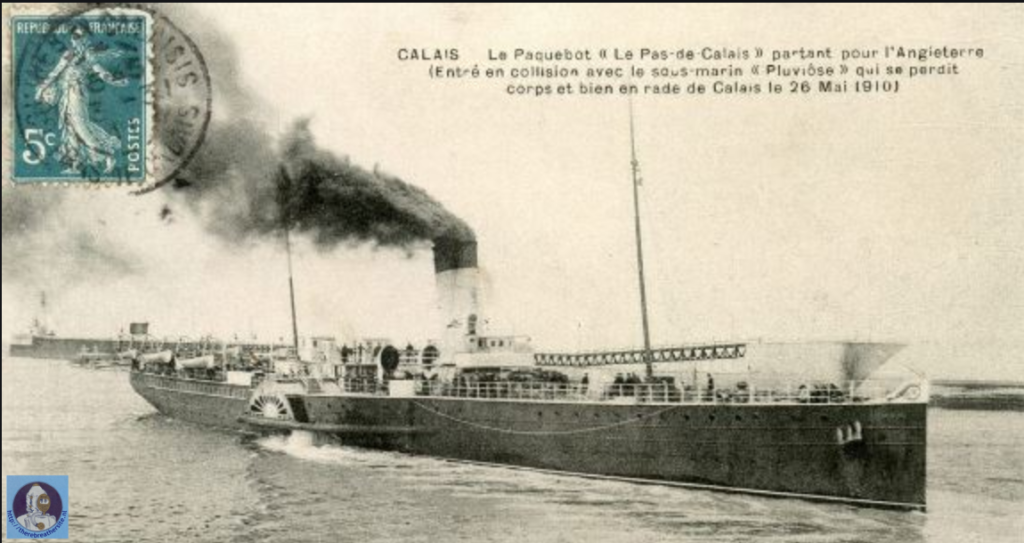
Earlier in the day, the French Navy’s submarines Pluviôse and Ventôse, based in Calais, had flown out to carry out sea trials of torpedoing and diving.
On board the Pluviôse were 27 officers, naval officers and sailors. Among them were Lieutenant (Navy) Maurice Callot,
the commanding officer and his second in command, Ensign Pierre Engel and Commander Ernest Prat,
commander of the Calais submarine base and guest of the commander.
Designed by engineer Maxime Laubeuf and built in Cherbourg, Pluviôse was the first of a series of nine ships launched from 1907 to 1910.
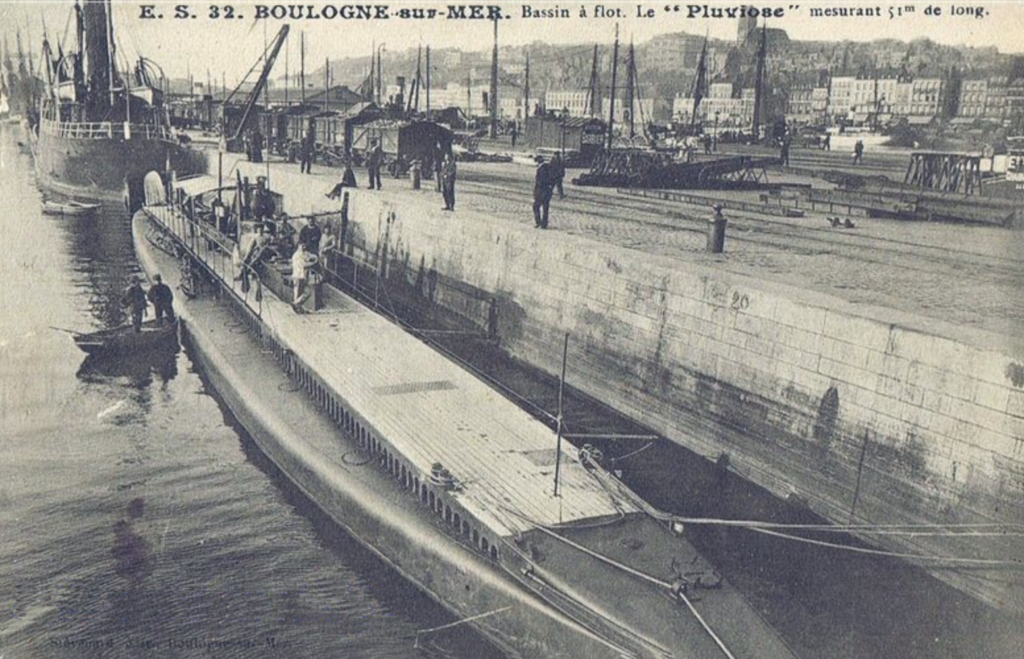
Half an hour after its departure, the vessel was off the harbor channel on its usual route, approximately 2,500 metres from the jetties and at a speed of eighteen knots.
Suddenly, a shock shook the vessel and passengers lost their balance. An unlikely accident had just occurred:
the Pas-de-Calais had just rammed the stern of the Pluviôse as it surfaced. The submarine’s water tanks and fuel oil tanks were ripped open and its hull torn.
Immediately, the commanding officer had all the lifeboats of his ship launched into the sea. They made their way to the submarine, with the tip in the air emerging
three meters out of the water, but the submarine turned around and sank quickly and the rescuers were helpless.
The ship was damaged, it could not continue its course and the alert had to be given as soon as possible.
So it’s heading as fast as possible towards Calais. As soon as the vessel was alongside and the port authorities were informed, rescue operations were organized.
Several boats were heading towards the scene of the accident. Among them, the Calais port lifeboat Edmée et Renée, the Calaisian tug and the two destroyers Tourbillon and Grenadier.
Within a few hours, the wreck was located. It is located 22 metres from the surface. Divers descend and strike the hull several times.
No sound reaches them in return, the conclusion is obvious: there is no more human life aboard the Pluviôse. But the sea was getting rough and the work had to be stopped.
The counter-torpedo boats Durandal and Escopette, as well as two tugs with two floating barges set out from Dunkirk for Calais./
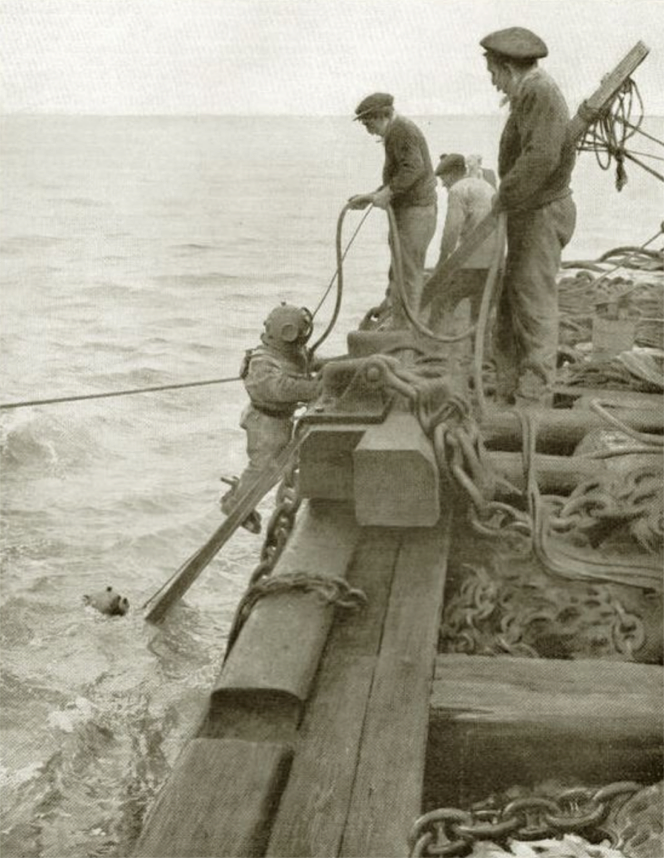
The next day, activities resumed. The first official characters arrived in Calais. There was Mr Trepon, the Prefect of Pas-de-Calais,
who accompanied Admiral Boué de Lapeyrère, Minister of the Navy, and Mr Chéron, Under-Secretary of State for the Navy.
But the technical means of the time were weak, not well suited to in-depth work. The refloating work, undertaken with equipment
from Cherbourg and the barges La Girafe, was difficult to carry out. The very rough sea made them impossible for several days.
La Girage tried to sling the submarine using eight chains, but only one chain was installed eight days later.
The hard work was entrusted to the 6,610-tonne, 89-metre-long, 260-man crewed coastguard Bouvines, with equipment adapted to the task.
It is only on 3 June that a few operations can be carried out. Additional ships are on their way, coming from other ports.
On June 5, as hopes began to mount for the refloating of the submarine, a waterway on one of the barges sent the Pluviôse back to the bottom of the ocean.
It wasn’t until June 10 that the wreck of the submersible finally entered the port of Calais after many adventures, pulled by three tugs, the Mouton, the Nord and the Calaisien.
From 13 to 19 June, the doctor major Henry Savidan (born on 14 February 1865 in Lanmeur), wearing a suit and mask, assisted by the submariners of the Ventôse,
will extract one by one with great courage the bodies of the submarine, and participate in their identification.
He will be made a Knight of the Legion of Honour for this act of courage and self-sacrifice, on the day of the national funeral of the victims,
by the President of the Republic Armand Fallières himself. Their examination will lead to the conclusion that the death was due to the inhalation
of toxic products released by the batteries when they were sprayed with sea water at the time of the collision.
The crew did not survive for more than ten minutes (the victims’ watches were stopped at 1410 hours).
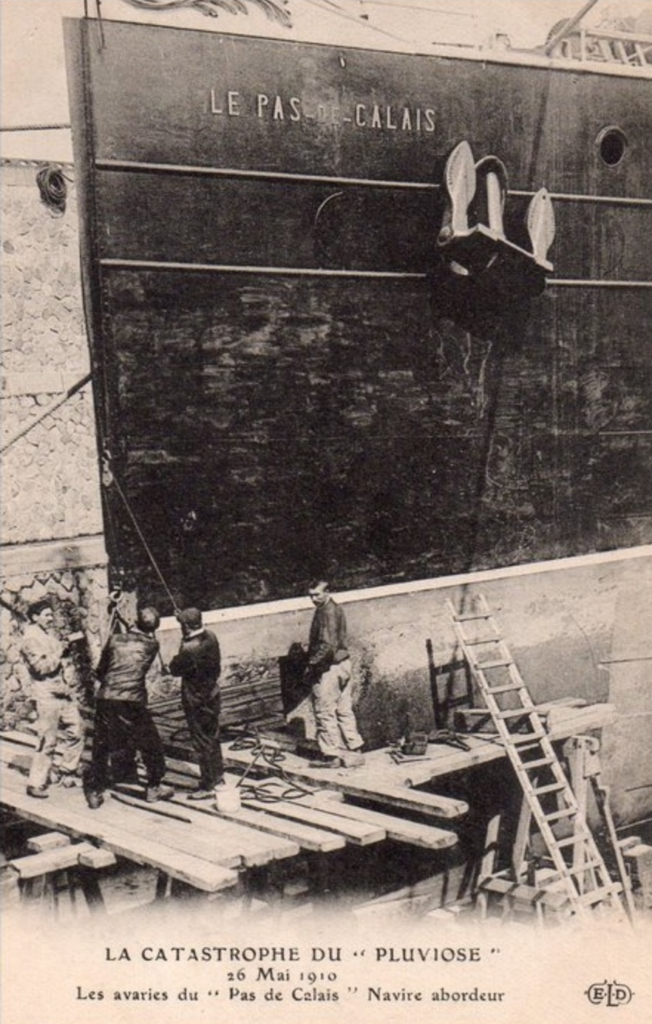
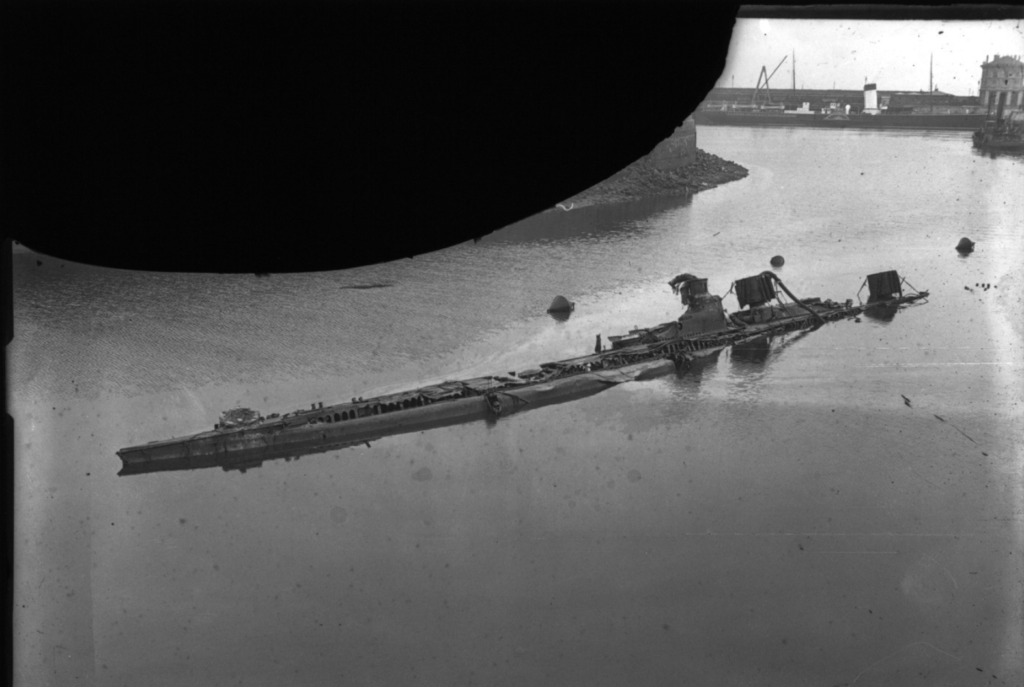
The many adventures and difficulties in recovering the submarine and the bodies of the victims were to be reported in
all the regional (l’Avenir de Calais & le Phare de Calais) and national newspapers (l’Illustration, le Petit Parisien…),
from 27 May onwards (the information reached Paris on 26 May at around 3 p.m.), and aroused a great deal of emotion.
A national funeral was organized for the victims on 22 June, a special train brought eighty deputies and senators to Calais,
a second train greeted by a hundred cannon shots brought the President of the Republic Armand Fallières, the President
of the Council Aristide Briand, the Minister of War General Jean Brun, the Minister of the Navy Admiral Boué de Lapeyrère,
consuls, British, German, Japanese, American officers, etc., etc. The funeral was attended by the President of the Republic
Armand Fallières, the President of the Council Aristide Briand, the Minister of War General Jean Brun,
the Minister of the Navy Admiral Boué de Lapeyrère, consuls, British, German, Japanese, American officers, etc.
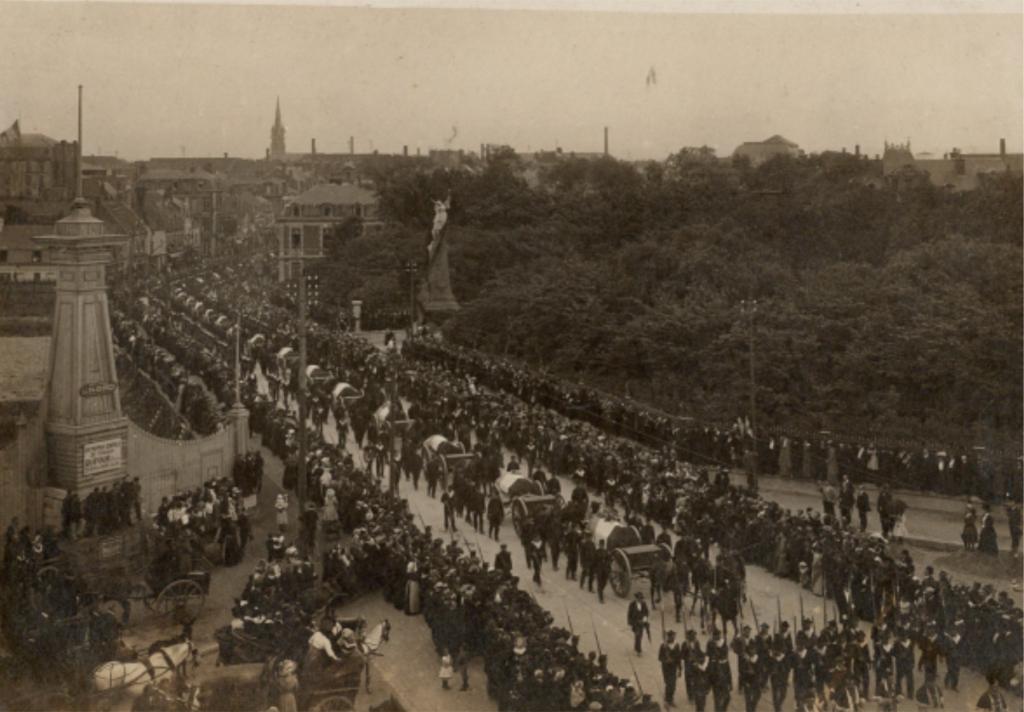
The bodies gathered in the Salle des Pas Perdus of the town hall are loaded onto gun carriages to be taken to the Notre-Dame church.
Four thousand soldiers stand guard along the way, among them Charles de Gaulle, who was doing his military service in Saint-Omer
and was not allowed to carry a coffin because of his size. After a requiem mass, the coffins were taken to the chapel of the “ardent chapel”
near the wreck of the Pluviôse. After speeches by successive ministers, the victims are directed to the respective cemeteries of their native land.
To the twenty-seven victims will be added a twenty-eighth: a spectator leaning out of a window to watch the funeral procession pass by will fall from the third floor.
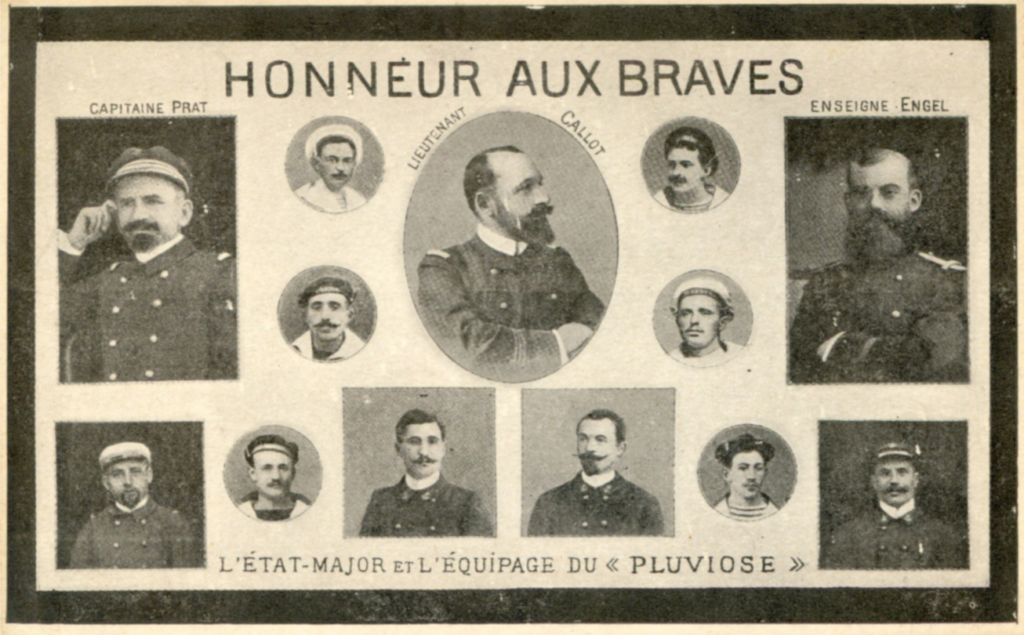
The Pluviôse, a bronze monument in memory of the twenty-seven victims, was inaugurated on 22 June 1913 in Calais. It reads: “To the sailors of Le Pluviôse who died for their country”.
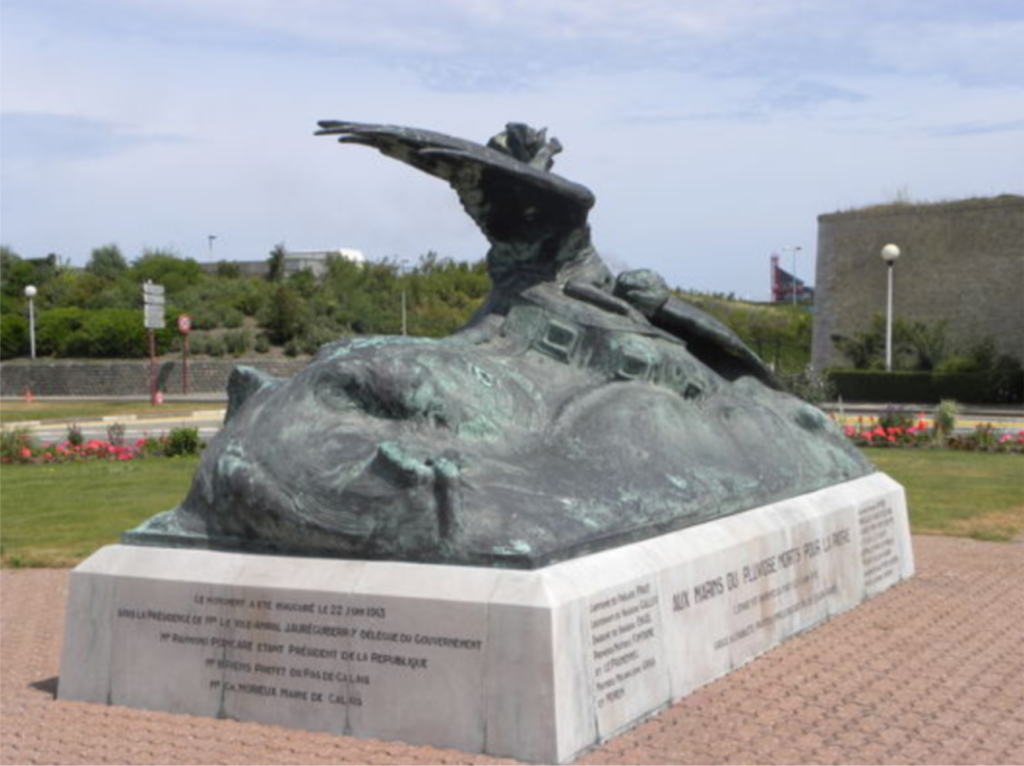
After this terrible accident, Wilhelm Haase-Lampe, a member of Dräger’s board of directors,
said it was reason to develop a rescue device. A closed-circuit oxygen system was chosen.
During the first 4 years, two systems were designed, both with the name DM1.
The first system was recognizable by a system with one oxygen cylinder and two hoses
leading to the counter lung which was carried on the back.
Remarkable is the counterweight that allowed the escaping sailor to get out of the submarine
after which he threw the weight away to start the ascent. A few years later in 1914 a
modified DM1 saw the light with two bottles visible. Unique is that even in these first
years a diluent was used to prevent oxygen toxicity at greater depths.
The two bottles on the DM1-1914 contain oxygen and compressed air.
Both systems were still injector systems and weighed around 20 kilos.
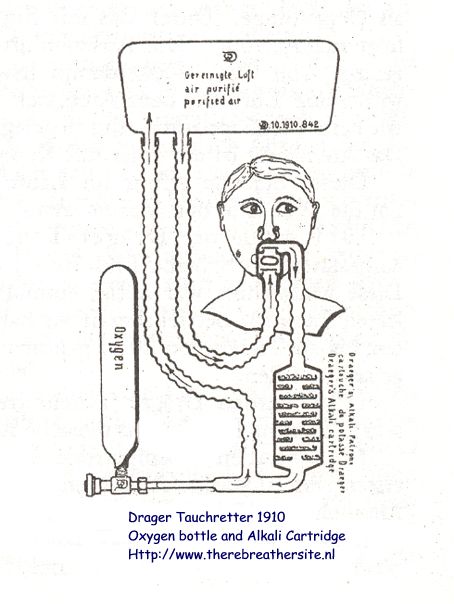
Here is Dräger’s first tauchretter from 1910. There is some confusion around the date this unit was designed.
It is clear that the injector has type 1 oxygen bottle and that the loop with two hoses is connected to the counter lung.
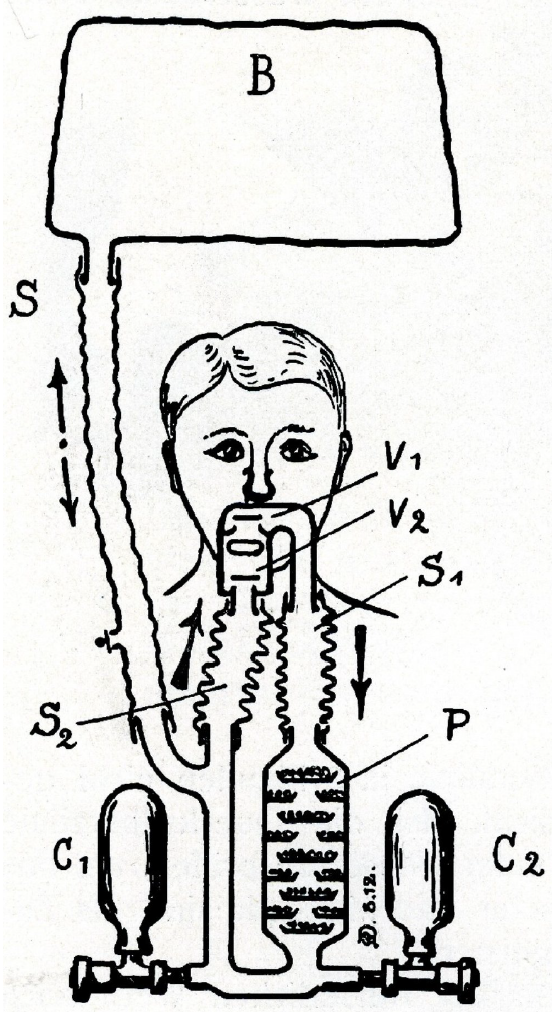
This second model of the DM1 was released in 1914. Only one hose is connected to the counterlung.
C1 bottle provides oxygen and C2 provides a diluent here air is used.
Valves V1 and V2 take care the gasdirection. Because the diluent can cause overpressure in the loop
an overpressure valve was build into the loop.
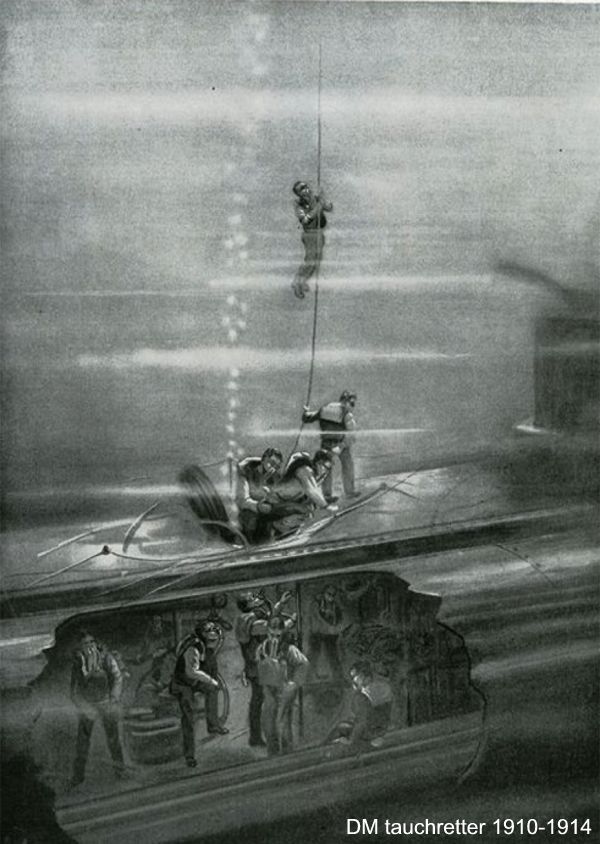
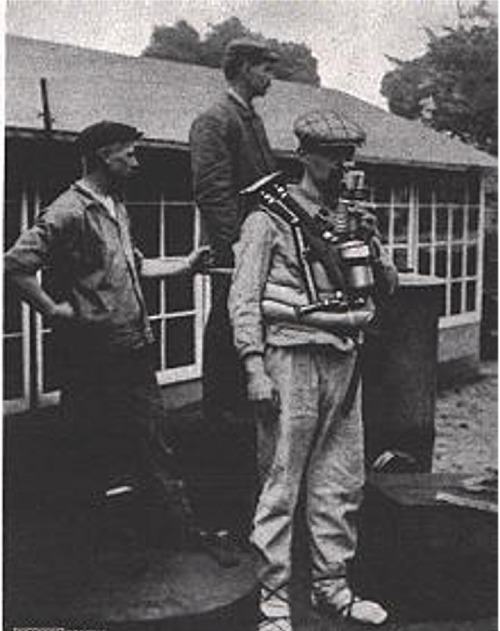
This Picture shows Hermann Stelzner (02.08.1884 – 19.10.1942) Direktor und Oberingenieur des Drägerwerks
during a trial with the first DM1 tauchretter.
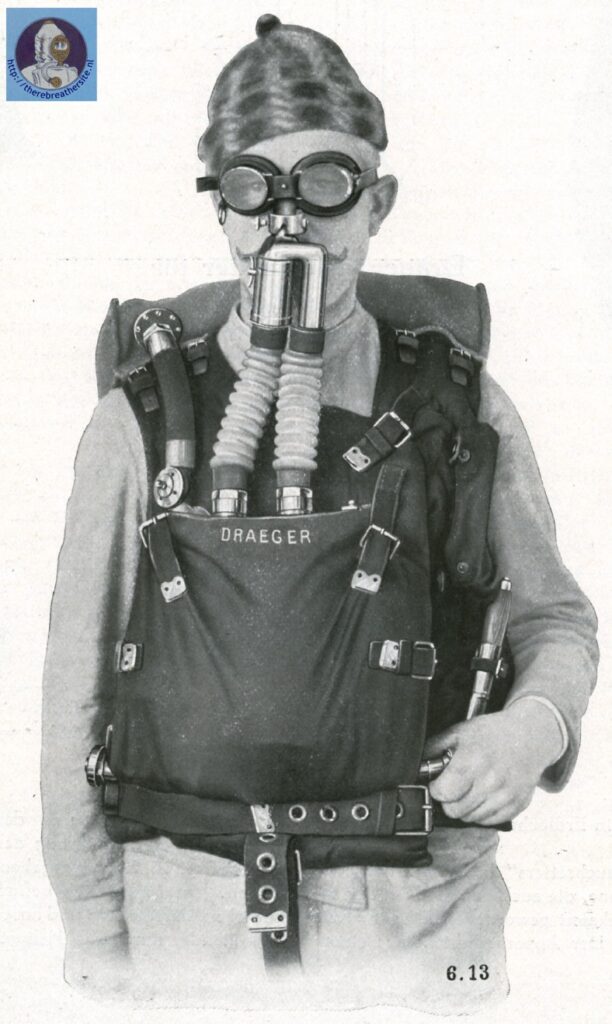
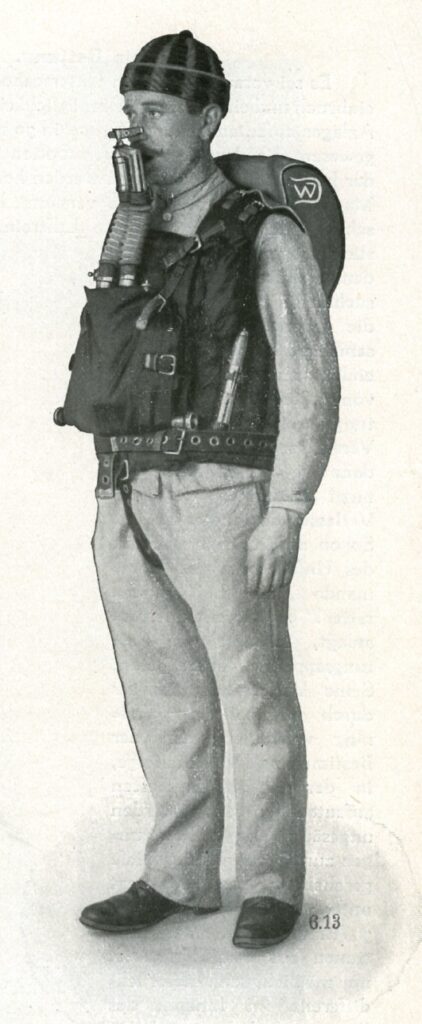
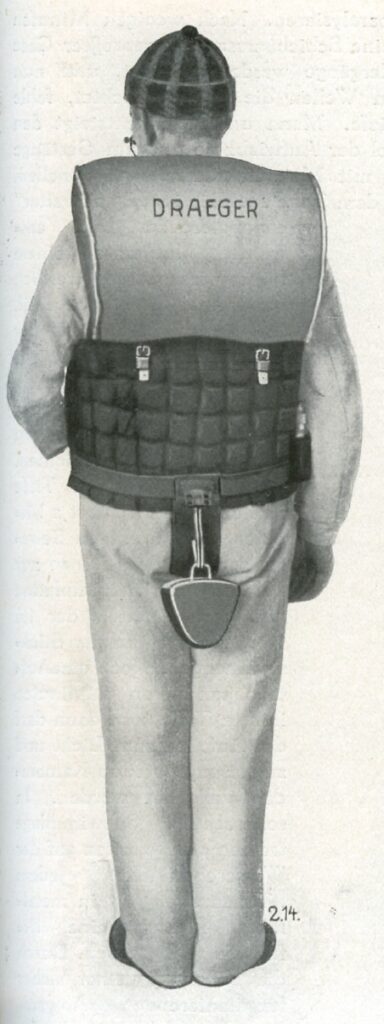
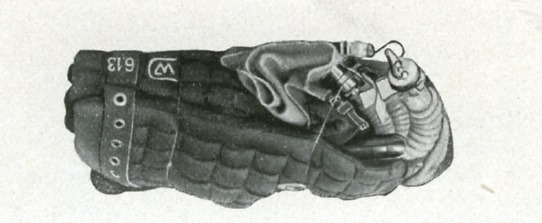
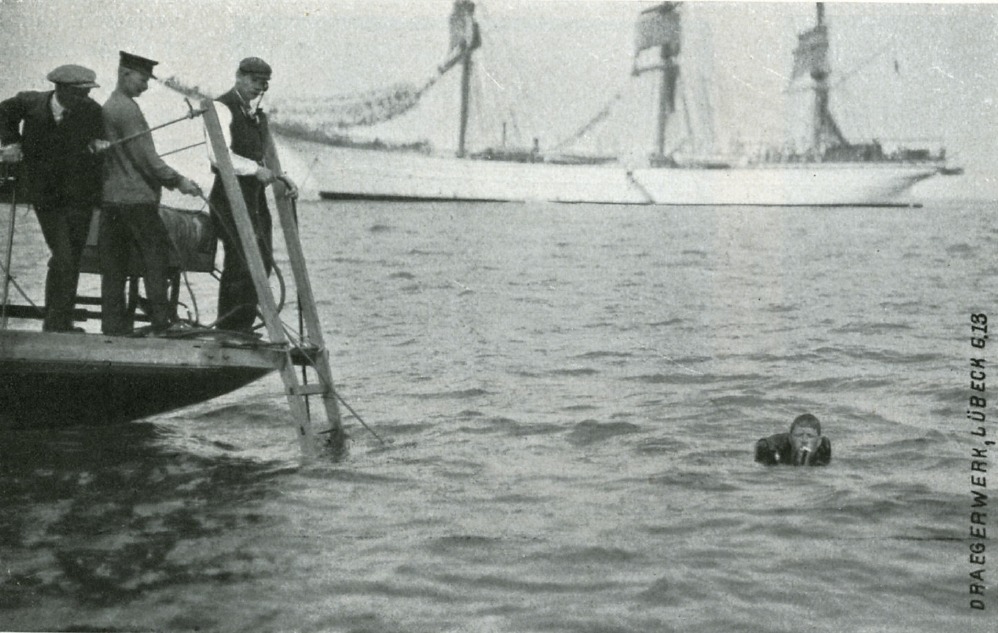
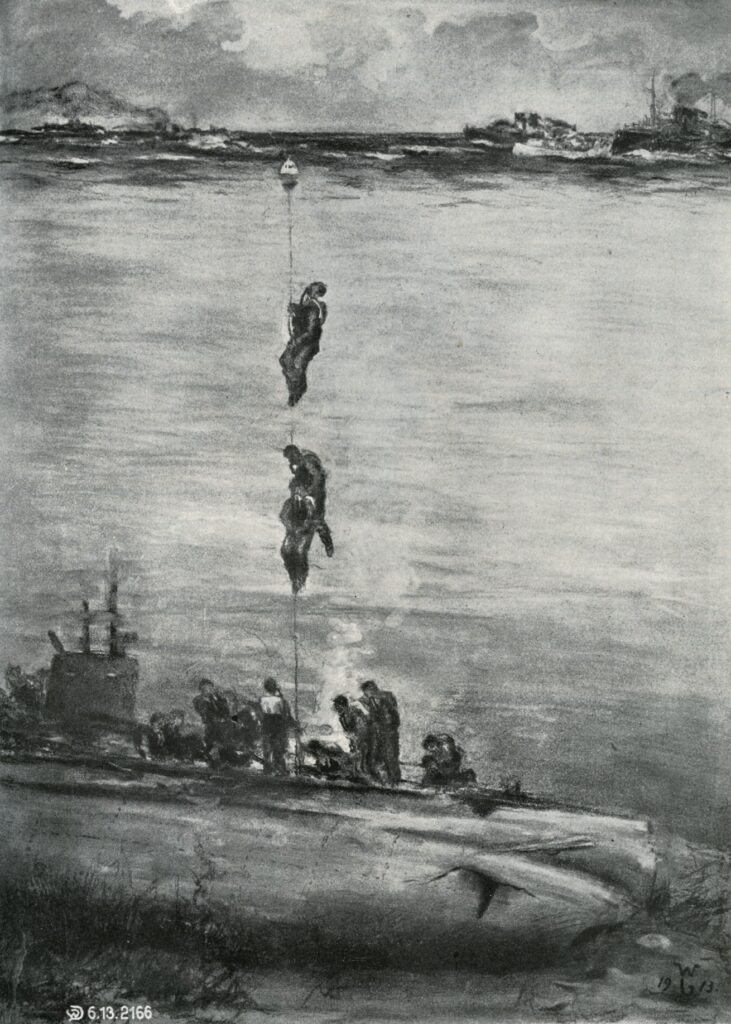
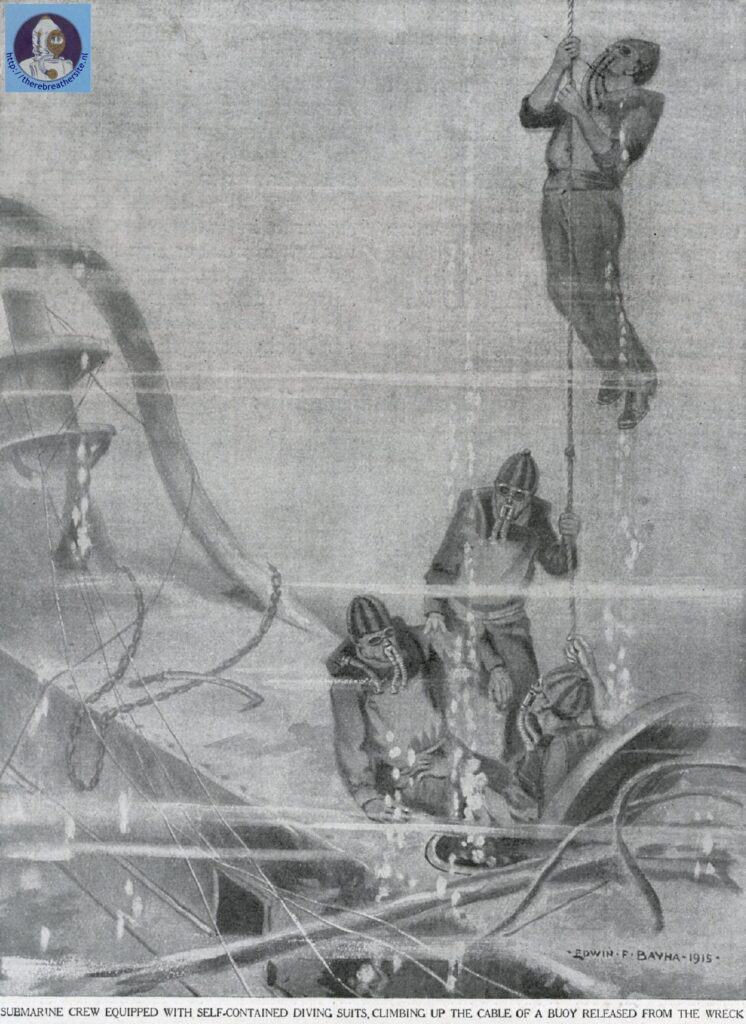
The weight that will be thrown away when the assent starts
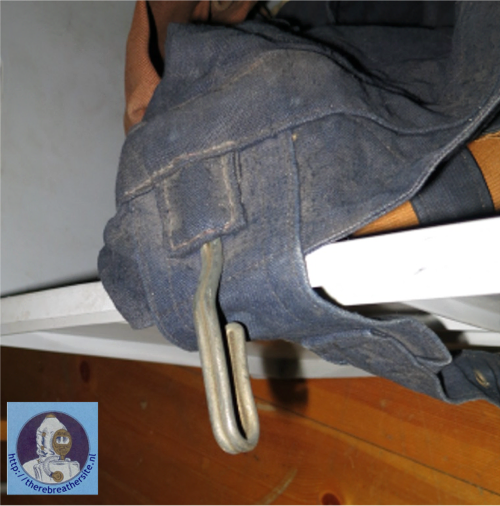
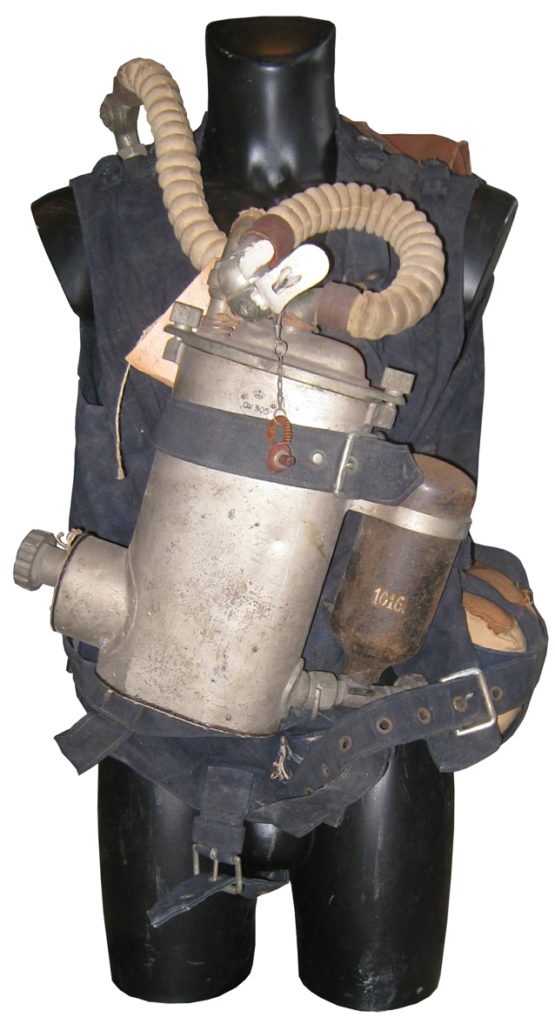
This fantastic picture shown one of the most early Tauchretter ever build! I looks to be a DM1 of the first generation.
We recognise one oxygenbottle, but also one hose leading to the counterlung. It looks like a version inbetween the 1910
and 1914 DM1 tauchretter. Not much is known about this exact version, but it is certainly the DM1.
picture published with the kind permission of mr. Sven Erik Jørgensen (Dk)
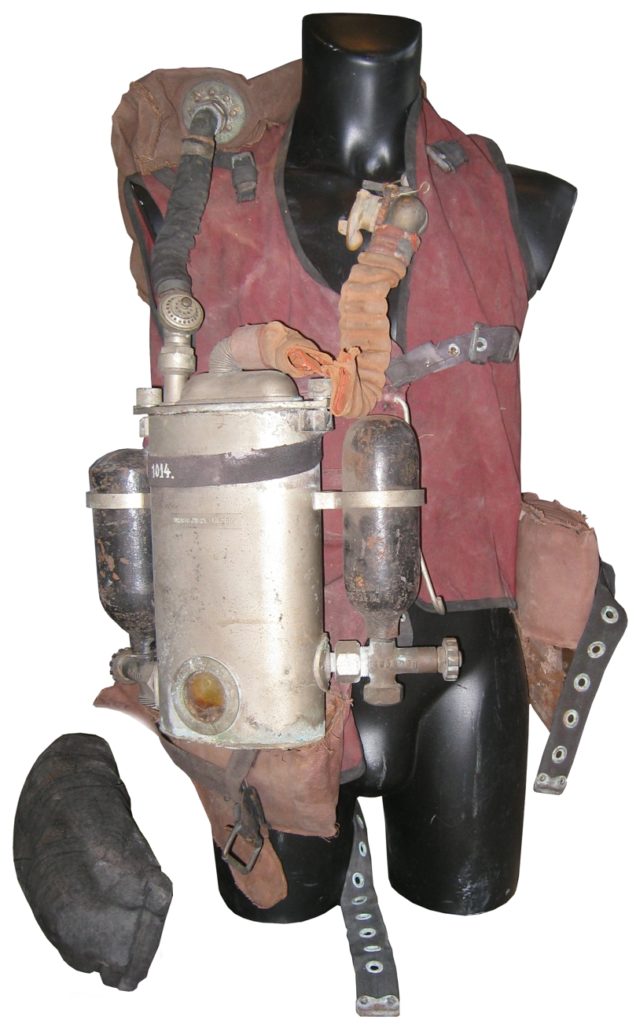
This second version shows a model after 1914. Clearly visible are the two cilinders, one with oxygen and one with Air.
One hose leads to the Counterlung very similar to the DM1-1914.
picture published with the kind permission of mr. Sven Erik Jørgensen (Dk)
I would like to thank Sven Erik Jørgensen for making these photos available to me.
These are truly unique photos of the very first tauchretters produced even before the First World War.

Therebreathersite was founded by Jan Willem Bech in 1999. After a diving career of many years, he decided to start technical diving in 1999. He immediately noticed that at that time there was almost no website that contained the history of closed breathing systems. The start for the website led to a huge collection that offered about 1,300 pages of information until 2019. In 2019, a fresh start was made with the website now freely available online for everyone. Therebreathersite is a source of information for divers, researchers, technicians and students. I hope you enjoy browsing the content!
